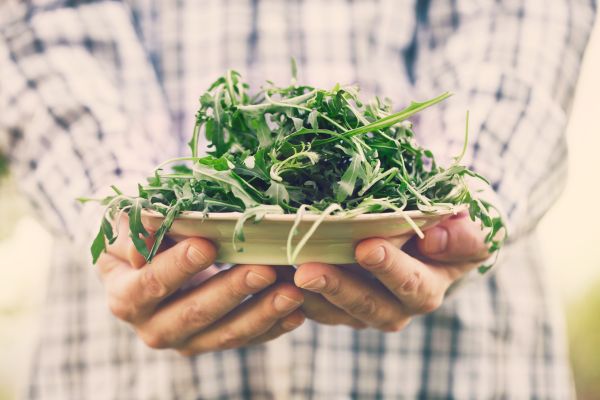
It’s easy to get stuck in a cooking rut. You come home from work late, you cook up a chicken breast with some vegetables, you sit down in front of Netflix, and there goes your night.
The key is to create variation in your food with new techniques, flavors, and ingredients. We recently spoke to a handful of chefs throughout the country, who told us their personal favorite ingredients to cook with. From basics like olive oil and soup stock to more exotic things like pink peppercorns and Kaffir lime leaves, their advice will remind you that cooking is a creative art — have fun! Play!
Tim Griffin, Brick House Tavern + Tap
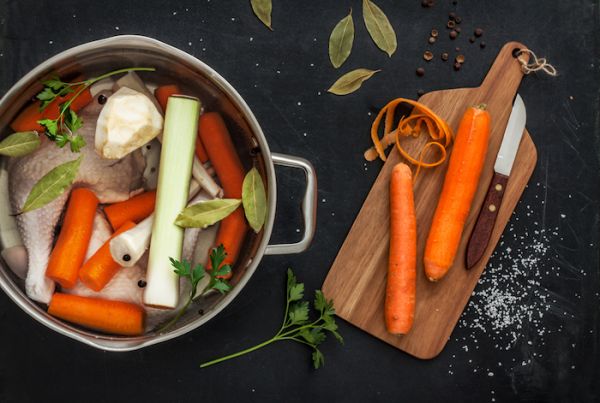
Stock: “Throughout global cuisines, stocks are utilized as a foundation for table-fare and a way to be resourceful with all the parts of animals and plants. At home, I make stock each week and turn them into soups, reductions, and sauces.”
Garlic: “Pungent, sweet, roasted, black garlic and even burnt. Acidic, pungent, spicy. A little bit can really balance out a dish. Also, it’s good to keep vampires away.”
Wine: “I grew up in a house with a little sign on the wall that said, ‘I love cooking with wine and sometimes I put it in the food.’ Wine is great to balance out dishes by adding sweetness, tannic notes and acidity. Oaked wines can add smoky characteristics and vanillin. Old vine wines can add prune and raisin notes.”
Kevin Spencer, SĒR Steak + Spirits
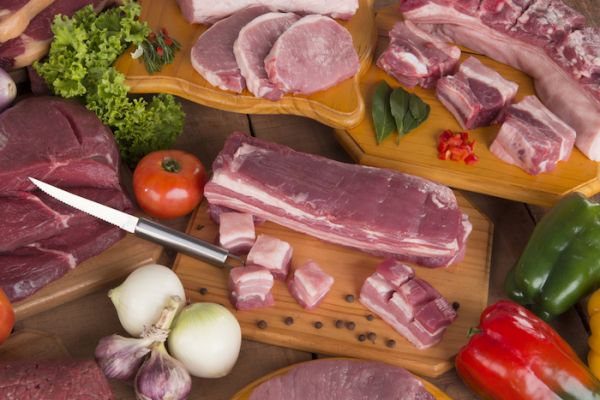
Pork: “Anything pork, any cut of pork, all things pork. Most of my favorite things to eat are pork, Zweigle’s White Hots (all pork hot dogs from Rochester, New York), Andouille sausage, chops, belly, pulled pork, trotters, jowl. I love the flavor and applications of pork whether using a tenderloin as the star of a dish, using the trotters to flavor a stock or a soup, or the tails for a fun bar snack. Pork can be the star of a dish or a great blank canvas to play with. In addition, I’m a huge fan of low country food where pork is present a lot.”
Vinegar: “Vinegar is another versatile ingredient that is used a lot, from pickling, to finishing a dish or a salad, a vinaigrette, or a shrub in a cocktail. It adds complexity to a sauce and also helps bring out flavors. I like the endless possibilities of what you can do with vinegars and what you can turn into vinegar.”
Bourbon: “My third favorite ingredient has to be bourbon. Not only is it delicious for cocktails, on the rocks, or neat, I also will use it in dishes to add an earthy sweetness to sauces, vinaigrettes, pickling and glazes. Utilizing bourbon is another trick I picked up while experiencing the low country for the first time. I always liked whiskey, but then I discovered the sweet complexities of some small batch bourbons. The story behind each small batch bourbon helps give food some soul and personality, just like using local artisans and farmers for ingredients.”
Jason Hoffman, IVY Kitchen
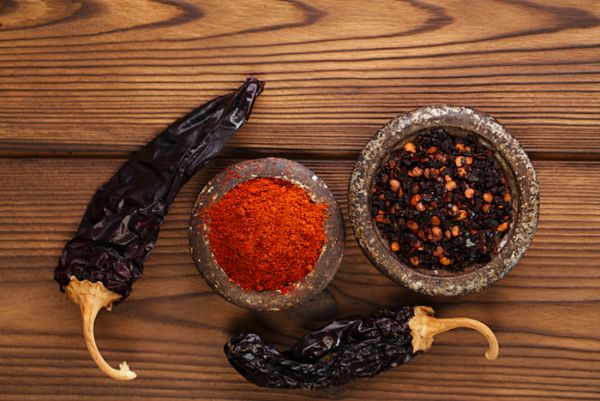
Beef/Chicken Stock: “When preparing great sauces or soups, the foundation starts with the largest-volume ingredient. The stocks I use are made from scratch and slow-boiled to extract all of the flavors from the vegetables and bones. Outstanding stock increases depth and complexity of any sauce or soup.”
Chipotle: “I like to add Chipotle a dish and create a new exciting southwest version. We are currently featuring a Texas Turkey Reuben Sandwich, for example. We infused chipotle into the sauerkraut and pair it with Hickory Smoked Turkey and chipotle Thousand Island dressing to pump up the flavors. It is a regional ingredient that can bring a familiar flavor to any dish to spice it up.”
Hellman’s Mayonnaise: “This is my go-to brand for mayonnaise. This quality is exceptional and once again is a base for most dressings and spreads. The product thickness and its ability to hold up the additions of vinegars and fresh citrus make it my go-to for all salad dressing and sandwich spreads.”
Chef Bryan Forgione, Buddy V’s Ristorante

Pork Confit: “This is something we just started making regularly at the restaurant for weekly specials. Why? Because pork is truly a special gift from the gods and this is just another delicious way to honor it! We serve it with potato gnocchi, black trumpet mushrooms, Tuscan kale and fontina fonduda.”
Sausage: “We are experimenting with different types of sausage right now. We’re having some fun with our new 10-pound sausage stuffer for the kitchen. The possibilities and combinations seem almost endless, and when you truly nail it, meaning texture, flavor and moisture, there aren’t too many things that are better!”
Wood: “Whether it be smoking or straight on grilling, cooking over a wood fire is so damn good and in such a simple way. Start with your protein, add some salt, pepper, maybe a little bit of oil and cook it! When done properly, it makes for truly a memorable experience. But it goes a bit deeper than that. There’s something primitive that you connect with when you light that fire. You got to think that 10,000 years ago somebody dropped a woolly mammoth rib into the fire and knew they were onto something! So in a way we’re paying homage to that.”
Dalton Wilson, DW Bistro
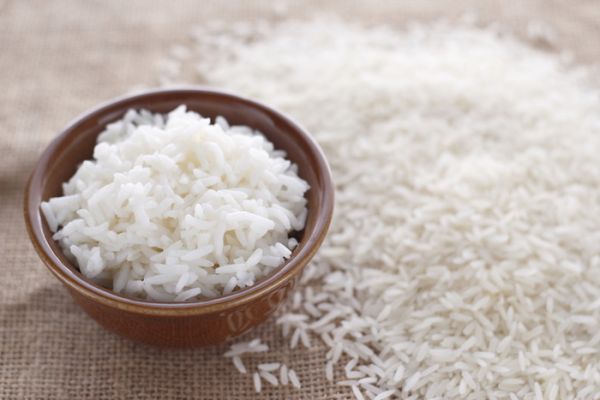
Jerk Seasoning: “I love jerk seasoning because it goes with just about everything. It is great on fish, scallops, chicken, tuna. It is the universal spice!”
Chicken: “Chicken is simple. You can roast it with fresh pepper and salt and it is fabulous. Whether one grills, poaches or fries it, the flavors are totally transformed.”
Rice: “Rice is a standard starch because it is so versatile. You can enjoy it by itself with fresh cracked pepper and butter or totally change the profile in a sushi roll, for example. Rice is the ultimate family-style starch because you can do a lot with a little.”
Frederic Don, Twist by Pierre Gagnaire
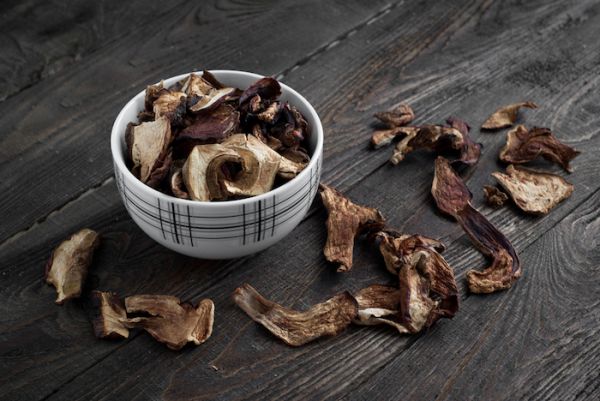
Potatoes: “Potatoes are a basic ingredient, but there are so many ways to transform them. From a simple french fries or a mash to a pomme soufflé!”
Porcini: “Porcini mushrooms are a wonderful product and remind me of a time when I use to pick porcini in the mountains each morning back in France. The essence of nature is important.”
Truffle: “I enjoy eating truffle as much as I love to cook with this mushroom. I add truffle to a simple risotto or pasta and with just scrambled eggs to bring the dish to another level.”
Aaron Neeley, Siegel’s 1941
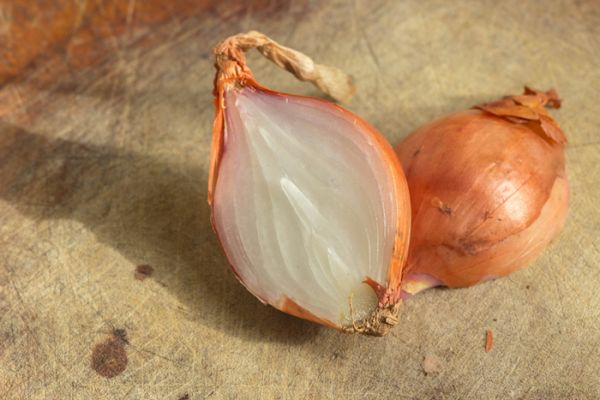
Shallots: “I love to use shallots for their versatility and flavor profile. In the food world, they would probably land somewhere in between a garlic clove and an onion. Their uses range from being incorporated into salad dressings and sauces but also could be deep fried and used as a garnish.”
Soba Noodles: “I am also a big fan of soba noodles. We use them for a variety of dishes at Siegel’s 1941, including our Ahi Tuna dish and Chow Mein.”
Cabbage: “While I did not grow up eating a lot of cabbage, but I have become a fan of this ingredient. We use it in our corned beef and cabbage at the restaurant, and it is a big hit at home when cooked for a traditional dish called Sarma from my wife’s native country.”
Micah Waltz, Andiron Steak & Sea
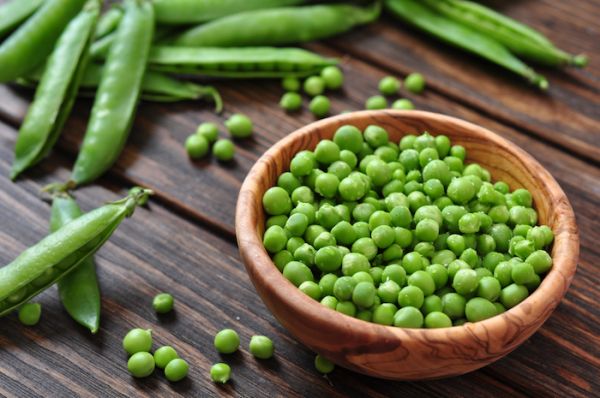
Morel Mushrooms: “Growing up in Idaho, the treasures of morel mushrooms and early spring goodies were always lurking. Regardless of whether you are poor or rich, in Idaho anyone can go out and get these beautiful mushrooms. Either dark chocolate brown morels that tend to be more meaty, or light tan morels that are more tender—you can never go wrong with a pan-seared venison steak with a morel sauce.”
Rhubarb: “In regard to spring, rhubarb is another go-to ingredient. The tarty flavor helps balance dishes. While growing up, I would always smell my mother’s rhubarb cobbler in the oven. The bright rosy pink really speaks to the colors of spring.”
Peas: “I think peas always get a bad rap mostly because people don’t know their versatility. For example, when English peas are picked from their pods, they resemble frozen peas from your supermarket, but are nothing alike when tasted. Using snap peas or English snow peas add texture and colors that only a pea can bring.”
Kim Canteenwalla, Andiron Steak & Sea
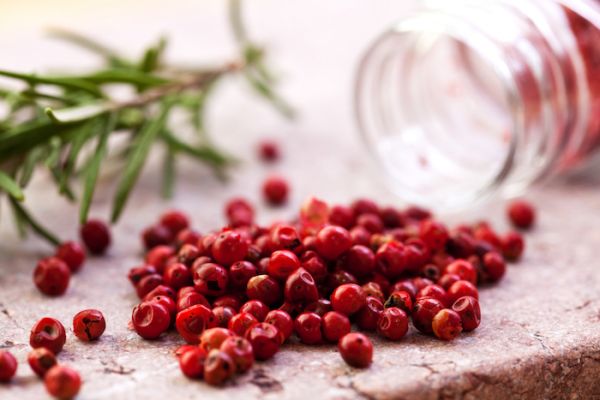
Pink Peppercorns: “Pink Peppercorns aren’t actually from the peppercorn family, but part of the cashew family. They originated in Brazil but were brought to Florida in the 16th century as an ornamental plant. They are subtly spiced with a light, fruity flavor that works really well with seafood and greens. But they also provide a nice alternative note on the normal spice palette, especially with a little citrus zest. It grows commonly in California, Nevada and Arizona. In fact, there is a tree right down the block from my house. I utilize it in everything from eggs to vinaigrettes, as well as desserts.”
Kaffir Lime Leaves: “I first started using Kaffir lime leaves in the early ’90s when I was working in Indonesia and Thailand, where it is a very common seasoning and often used in traditional medicine as well. Kaffir lime leaves have a bold, tarty, citrus flavor, which work so well with seafood & poultry. They are best utilized at the last minute to enhance a dish. A simple chiffonade of leaves can give the dish a great finish. Whole leaves work best for curries and soups.
Chicken Oysters: “The oyster is the nugget of dark, firm meat on the back of the carcass close to the thighs. They are one of my favorite pieces of meat in the world and definitely the tastiest part of the chicken (turkey oysters are even better), and I have used them on many different menus over the years in many different executions. They are great fried, braised, or, my personal favorite, grilled. The meat has a wonderful texture and deep flavor, and is great for people who don’t think they like dark meat. The French often say, ‘Only a fool would leave them behind!’”






